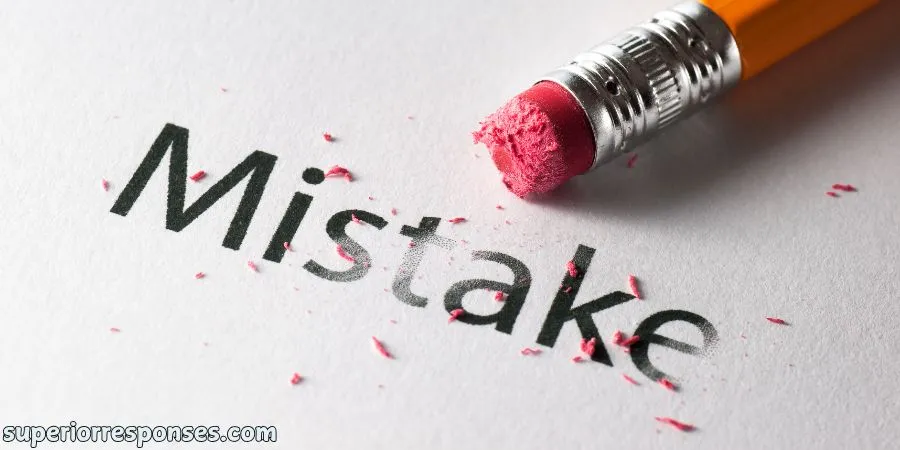When addressing mistakes, it’s important to be constructive and professional to ensure your message is received positively. Here are polite ways to communicate this, tailored for various situations.
Contents
- 1 1. Offer Constructive Guidance
- 2 2. Use a Collaborative Tone
- 3 3. Frame It as an Opportunity for Growth
- 4 4. Focus on Preventing Recurrence
- 5 5. Be Direct but Respectful
- 6 6. Acknowledge the Effort While Highlighting the Error
- 7 7. Propose Process Improvements
- 8 8. Encourage Ownership and Responsibility
- 9 9. Express Confidence in Their Abilities
1. Offer Constructive Guidance
This approach focuses on solutions and learning from the mistake.
- “Let’s make sure we avoid this next time by [specific solution].”
- “For the future, let’s take a different approach to ensure this doesn’t happen again.”
- “I appreciate your effort, but here’s how we can do it better next time.”
- “Let’s work together to ensure this doesn’t happen moving forward.”
- “It’s a learning opportunity—we’ll approach it differently next time.”
2. Use a Collaborative Tone
This shows you’re on the same team and willing to help.
- “We’ll want to handle this differently next time. Let’s go over it together.”
- “Moving forward, let’s try this method to avoid any issues.”
- “Let’s be mindful of this in the future—here’s how we can address it.”
- “I think we can avoid this next time by planning a bit more ahead.”
- “We can learn from this and improve for next time.”
3. Frame It as an Opportunity for Growth
Encouraging improvement softens the critique.
- “This is a great chance to refine how we approach this next time.”
- “We all make mistakes; what’s important is learning from them.”
- “This shows where we can improve—let’s focus on that.”
- “Let’s take this as a learning point for the future.”
- “Every challenge is an opportunity to get better—here’s what we can do next time.”

4. Focus on Preventing Recurrence
Addressing future actions minimizes blame and emphasizes prevention.
- “To prevent this in the future, let’s [specific action or solution].”
- “Next time, we’ll need to pay closer attention to [specific detail].”
- “Let’s make sure this doesn’t happen again by double-checking [specific process].”
- “We’ll put measures in place to ensure this won’t be an issue again.”
- “Let’s review the process to avoid similar mistakes moving forward.”
5. Be Direct but Respectful
Sometimes, a straightforward approach works best when paired with a respectful tone.
- “I’d like us to avoid this mistake in the future by doing [specific action].”
- “This is something we can’t repeat moving forward—here’s how we’ll address it.”
- “I trust you’ll be more careful with this next time.”
- “It’s important we don’t let this happen again. Let’s discuss how to fix it.”
- “We’ll need to ensure this doesn’t happen again, and I know we can do it.”
6. Acknowledge the Effort While Highlighting the Error
Balancing positive reinforcement with constructive feedback ensures the message isn’t overly critical.
- “You’ve done a great job overall, but this is something we can improve on.”
- “I appreciate your hard work. Let’s work on refining this for the future.”
- “You handled this well, but here’s how we can avoid issues next time.”
- “Great effort! Let’s adjust a few things to make it even better moving forward.”
- “You’re on the right track, and we can tweak this to prevent errors in the future.”
7. Propose Process Improvements
Making it about systems or workflows depersonalizes the critique.
- “We may need to adjust our approach here to ensure consistency.”
- “Let’s revisit the process to see how we can make it error-proof.”
- “I think a small change in the workflow could prevent this in the future.”
- “Let’s refine this part of the process to avoid similar issues next time.”
- “I’ll update our guidelines to make sure this is clearer for everyone.”
8. Encourage Ownership and Responsibility
Help the person take accountability without being harsh.
- “What steps can we take to make sure this doesn’t happen again?”
- “How do you think we can improve this for the future?”
- “Let’s reflect on this and figure out how we can do better next time.”
- “I trust you to take care of this and ensure it’s addressed moving forward.”
- “What would you suggest to prevent this in the future?”
9. Express Confidence in Their Abilities
Showing belief in their skills can motivate improvement.
- “I know you can get this right next time—let me know if you need support.”
- “You’ve got this—just a minor tweak, and it’ll be perfect next time.”
- “This was a small misstep; I’m confident you’ll nail it moving forward.”
- “You’ve handled challenges like this before, and I know you’ll fix it.”
- “I trust you’ll learn from this and get it right next time.”
